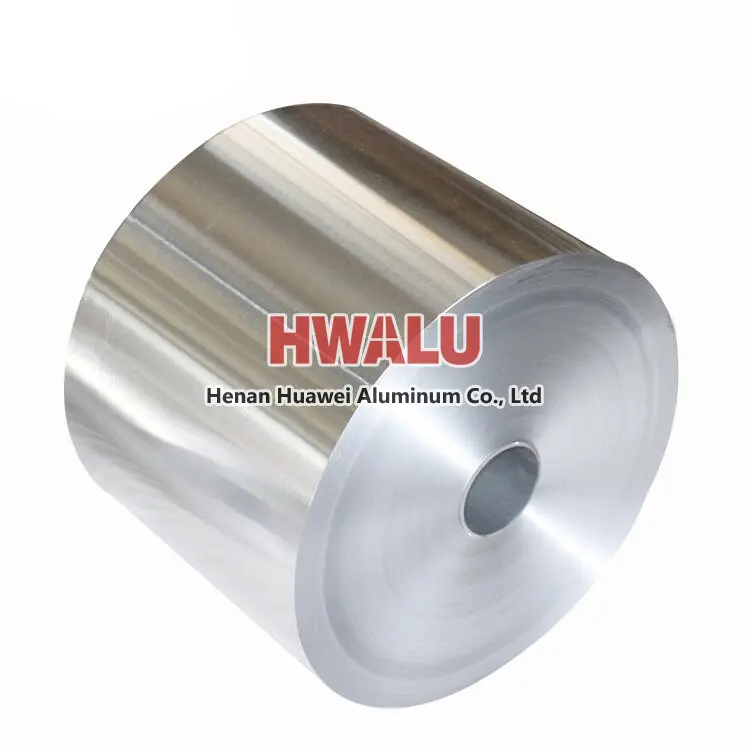What is Aluminum Foil for Pans Aluminum foil for pans is usually thicker and stronger than typical kitchen foil to withstand high heat and stress. Aluminum foil for pans can be used to cover the bottom of pans to keep food from sticking to them, and to make liners for steamers and bakeware to prevent food from sticking to the bottom or to the pan. The use of aluminum foil for pans is similar to that of ordina ...
Aluminum foil for capacitor parameters Alloy Temper Thickness Width Core inner diameter Maximum outer diameter of aluminum coil Thickness tolerance Wettability Brightness L Aluminum foil for capacitors 1235 0 0.005-0.016mm 100-500mm 76 500 ≦5 Class A (Brush water test) ≦60 aluminum foil capacitor The aluminum foil used in electrolytic capacitors is a corrosive material that wor ...
why aluminum foil is used to wrap chocolate? How does aluminum foil protect chocolate? We found that both the inside and outside of the chocolate must have the shadow of aluminum foil! One is that chocolate is easy to melt and lose weight, so chocolate needs packaging that can ensure that its weight does not lose, and aluminum foil can effectively ensure that its surface does not melt; The second is the c ...
What is aluminum foil for inner tank Aluminum foil for inner tank refers to a method of making inner tank, that is, aluminum foil material is used when making inner tank. A liner refers to a container, usually used for storing or cooking food. Aluminum foil is a thin, malleable metallic material made of aluminum alloy that is often used in food packaging and cooking utensils. The advantage of using aluminum f ...
Introduction: Welcome to Huawei Aluminum, a trusted name in the aluminum industry. Our 14 Micron Aluminum Foil for Food Use is a top-quality product that serves various purposes in the food packaging and laminated materials sector. In this detailed guide, we will delve into the specifics of our 14 Micron Aluminum Foil, discussing its alloy models, specifications, applications, advantages, and more. Alloy Mo ...
What is 1050 H18 aluminum foil 1050 H18 aluminum foil is an aluminum foil material with high purity and good mechanical properties. Among them, 1050 represents the grade of aluminum alloy, and H18 represents the hardness level. 1050 aluminum alloy is an aluminum alloy with a purity of up to 99.5%, which has good corrosion resistance, thermal conductivity and machinability. H18 represents the aluminum foil aft ...
Food packaging aluminum foil is related to human health and safety, and is usually produced with specific specifications and characteristics to ensure its suitability for the food industry. The following are some common specifications of aluminum foil for food packaging: Food packaging foil alloy types: Aluminum foil used for food packaging is usually made from 1xxx, 3xxx or 8xxx series alloys. Common alloys in ...
Why Can Aluminum Foil Conduct Electricity? Do you know how aluminum foil conducts electricity? Aluminum foil is a good conductor of electricity because it is made of aluminum, which has a high electrical conductivity. Electrical conductivity is the measure of how well a material conducts electricity. Materials with high electrical conductivity allow electricity to flow through them easily because they have many ...
Coiling defects mainly refer to loose, layer channeling, tower shape, warping and so on. Aluminum foil roll during the winding process. Because the tension of aluminum foil is limited, enough tension is the condition to form a certain tension gradient. Therefore, the winding quality ultimately depends on good shape, reasonable process parameters and suitable precision sleeve. It is ideal to obtain tight coils ...
Fire or explosion in aluminum foil rolling must meet three conditions: combustible materials, such as rolling oil, cotton yarn, hose, etc.; combustible materials, that is, oxygen in the air; fire source and high temperature, such as friction, electric sparks, static electricity, open flames, etc. . Without one of these conditions, it will not burn and explode. The oil vapor and oxygen in the air generated duri ...
Aluminum foil is a good heat insulator because it is a poor conductor of heat. Heat can only be transferred through a material by conduction, convection, or radiation. In the case of aluminum foil, heat transfer occurs primarily through radiation, which is the emission of electromagnetic waves from the surface of an object. Aluminum foil is a shiny, reflective material that reflects radiant heat back towards i ...
The main alloying elements of 6063 aluminum alloy are magnesium and silicon. It has excellent machining performance, excellent weldability, extrudability, and electroplating performance, good corrosion resistance, toughness, easy polishing, coating, and excellent anodizing effect. It is a typically extruded alloy widely used in construction profiles, irrigation pipes, pipes, poles and vehicle fences, furniture ...









